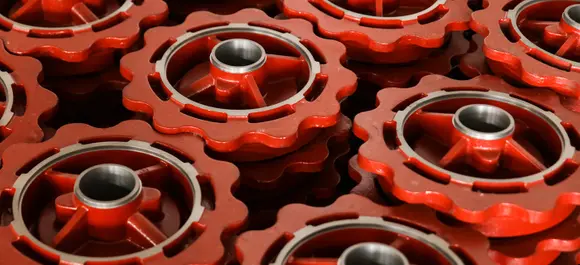Mobile:+86-311-808-126-83
Email:info@ydcastings.com
casting in manufacturing process
The Role of Casting in Manufacturing Processes
Casting is one of the oldest manufacturing processes known to humanity, with origins that can be traced back to ancient civilizations. This method involves pouring liquid material, often metal or plastic, into a mold where it cools and solidifies into a desired shape. Casting has evolved significantly over the centuries and remains a cornerstone in various manufacturing processes due to its versatility, cost-effectiveness, and ability to produce intricate shapes that would be difficult or impossible to achieve through other manufacturing methods.
The Casting Process
The casting process involves several steps, including pattern making, mold creation, melting, pouring, and solidification. Initially, a pattern of the desired product is made, often from materials like wood or metal. This pattern is then used to create a mold, which can be made from sand, metal, or ceramic. The choice of mold material depends on the casting method being employed and the properties of the final product.
Once the mold is ready, metal or other materials are melted in a furnace. The molten material is then poured into the mold cavity, where it begins to cool and solidify. After sufficient cooling time, the mold is broken away, revealing the cast product. Post-processing steps may include cleaning, heat treatment, and machining to achieve the final tolerances and surface finish required for the application.
Types of Casting Processes
There are several types of casting processes, each suited for specific applications. These include
1. Sand Casting This is one of the most common and economical methods. It uses sand as the mold material and is ideal for producing small to medium-sized parts.
2. Investment Casting Also known as lost-wax casting, this method is used to create complex geometries with precision. It involves creating a wax pattern that is coated with a ceramic shell. Once the shell hardens, the wax is melted away, and molten metal is poured into the cavity.
3. Die Casting In die casting, molten metal is injected into a steel mold under high pressure. This process is typically used for high-volume production of small, intricate parts, particularly in the automotive and electronic industries.
4. Permanent Mold Casting This technique employs reusable steel molds to produce more complex and durable castings. It's generally used for non-ferrous metals and offers better surface finish and dimensional accuracy.
casting in manufacturing process

Advantages of Casting
Casting offers numerous advantages that make it a preferred choice in manufacturing
- Design Flexibility Casting can produce complex shapes that would require extensive machining if produced through other methods.
- Material Variety A wide range of materials can be cast, including ferrous and non-ferrous metals, plastics, and ceramics.
- Cost-Effectiveness Especially for large production runs, casting can be more economical compared to other manufacturing processes, as it reduces material waste and processing times.
- Scale of Production Casting is highly scalable, making it suitable for both low and high-volume production environments.
Challenges in Casting
Despite its advantages, casting does present certain challenges. Defects such as porosity, shrinkage, and surface irregularities can occur, affecting the integrity of the final product. Careful process control, material selection, and mold design are critical in mitigating these issues. Furthermore, advancements in technology, such as computer-aided design (CAD) and simulation software, have improved the accuracy and efficiency of the casting process, allowing for better defect analysis and reduction.
Conclusion
Casting remains a vital manufacturing process that enables the creation of intricate and diverse components across various industries. Its adaptability, combined with ongoing technological advancements, ensures that casting will continue to play an essential role in the manufacturing landscape. As industries evolve and the demand for complex parts grows, the significance of casting in developing innovative and efficient production methods will undoubtedly persist, shaping the future of manufacturing.
-
Why Should You Invest in Superior Pump Castings for Your Equipment?NewsJun.09,2025
-
Unlock Performance Potential with Stainless Impellers and Aluminum End CapsNewsJun.09,2025
-
Revolutionize Your Machinery with Superior Cast Iron and Aluminum ComponentsNewsJun.09,2025
-
Revolutionize Fluid Dynamics with Premium Pump ComponentsNewsJun.09,2025
-
Optimizing Industrial Systems with Essential Valve ComponentsNewsJun.09,2025
-
Elevate Grid Efficiency with High-Precision Power CastingsNewsJun.09,2025











